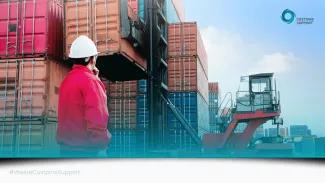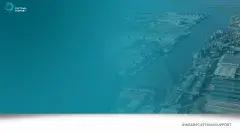Moving forward, the Customs Authority will check if the import declaration matches the ATO. The Aangifte Tijdelijke Opslag (ATO), which translates into the Declaration of Temporary Storage, is the carrier’s responsibility when the goods are unloaded. If there are discrepancies, the Customs Authority will refuse the import. They will also check if the goods are available, in other words, if the ship has already arrived at the port. If not, the Customs Authority will deny the import declaration.
On October 4th, this new procedure will be live.
Pre-notification is the Key
Both Dutch Customs and Portbase are saying that pre-notification of your imports is critical. While no import declaration may be done before the ship is in port and the goods have been unloaded, it is allowed to send a pre-notification to the Customs Authority up to 30 days before the goods arrive. The pre-notification contains the same information as the import declaration. The Customs Authority is then aware of what will be declared and can determine if the shipment or the documents need to be checked physically and notify the parties involved. We then know if we need to take action for the physical check or if the shipment will be released immediately upon arrival.
Automatic Import Declarations
When the shipment arrives at one of the ports in the Netherlands, a notification must be sent to the Customs Authority to change the pre-notification to an import declaration. Customs Support systems are connected to the customs systems and Portbase, which enables us to send this notification automatically. This means that your import shipments can be released 24/7 unless Customs has indicated that they wanted a physical check.
Importing Seamlessly in 4 Steps
Our specialists will make sure your shipment is imported without unnecessary issues. They can’t do so without your input. If you follow these four steps, you can ensure a smooth import process.
Step 1: Make sure all parties in your logistics flow know what is expected of them
Questions you need to answer are: who does your import declaration? Who issues the documents? Who transports the shipment? Who makes sure the import shipment is uploaded in Portbase (if a shipment is added twice, it is blocked, resulting in potential delays)?
Please note that as of October 4th, it is no longer possible to create two import declarations for one shipment. Your import declaration needs to be handled by one single customs agent.
Step 2: Make sure you provide all data and documents you provide are correct and complete
Documents and data needed for an import declaration are, for example, the invoice, packing list, location of the goods, expected date and time of arrival, and the Master Bill of Lading number (a House-BL or other BL is not allowed in the new CVB procedure).
Please note that as of October 4th, the number of boxes and the weights needs to be on the packing list, and they need to match the number of boxes and weights on the bill of lading.
Step 3: Report your shipment as soon as possible
The sooner you report your shipment, the sooner we can start with checking if everything is complete and correct. We then send a prenotification to the Customs Authority. If a physical check is warranted, we can arrange that ahead of the arrival to make sure delays are kept to a minimum.
Step 4: Make sure to update the Bill of Lading if applicable
If the information on the Bill of Lading needs to be amended, please contact the shipping company. They are the only party that can do this for you.
At Your Service
If you have any questions about the new CVB procedure or importing goods into the Netherlands, please contact one of our specialists. They are happy to answer your questions and ensure your goods are imported without hassle. Take the Load Off Your Mind.















